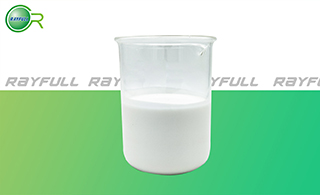Procymidone
    腐霉利 腐霉利
Introduction: Procymidone is a pesticide. It is often used for killing unwanted ferns and nettles, and as a dicarboximide fungicide for killing fungi, for example as seed dressing, pre-harvest spray or post-harvest dip of lupins, grapes, stone fruit, strawberries. It is a known endocrine disruptor (androgen receptor antagonist) and to interfere with the sexual differention of male rats. It is considered to be a poison.
Common name: Procymidone
Another name: Dicyclidine; Sumilex; Sumisclex; 3-(3,5-Dichlorophenyl)-1,5- dimethyl-3-azabicyclo[3.1.0]hexane-2,4-dione; etc.
Chemical name: N-(3,5-dichlorophenyl)-1,2-dimethylcyclopropane-1,2-dicarboximide
Empirical formula: C13H11Cl2NO2
Structural formula:

Mol. Weight: 284.14 g/mol
CAS No.: 32809-16-8
Specifications
Leading Procymidone supplier
Procymidone 98% TC
Procymidone 50% WDG&WP&SC
Packing:
BULK PACKING
Powder: 25kg/Bag, 25kg/Drum, 50kg/Drum etc.
Liquid: 200L/Drum, 20L/Drum, 10L/Drum etc.
SMALL PACKING
Powder: 1kg/Alu bag, 500g/Alu bag, 200g/Alu bag, 100g/Alu bag, 50g/Alu bag, 15g/Alu bag etc.
Liquid: 5L/Drum, 1L/Bottle, 500ml/Bottle, 250ml/Bottle, 100ml/Bottle, 50ml/Bottle etc.
Customerized packing label
Procymidone FAO standard
Professional registration
HAZARDS IDENTIFICATION
Hazard statement(s)
H332 (96.43%): Harmful if inhaled.
H413 (96.43%): May cause long lasting harmful effects to aquatic life.
Precautionary statement(s)
P261: Avoid breathing dust/fume/gas/mist/vapors/spray.
P271: Use only outdoors or in a well-ventilated area.
P273: Avoid release to the environment.
P304+P312: IF INHALED: Call a POISON CENTER/doctor/... if you feel unwell.
P304+P340: IF INHALED: Remove person to fresh air and keep comfortable for breathing.
P312: Call a POISON CENTER or doctor/... if you feel unwell.
P501: Dispose of contents/container to an approved waste disposal plant.
Supplemental Hazard Statements: none.
MAMMALIAN TOXICOLOGY
Acute toxicity: 1) Acute oral LD50 for rats is >5000 mg/kg. 2) Acute dermal LD50 for rats is >2500 mg/kg. 3) Acute inhalation toxicity LC50 (4 h) for rats is >1.5 mg/L. 4) Skin irritation: Slightly irritating to skin (rabbits). 5) Eye irritation: Non-irritating to eyes (rabbits). 6) Skin sensitization for guinea pig: Not a sensitizer.
NOEL: (2 y) for rats is 14 mg/kg/day; (2 y) for mice is 15 mg/kg/day. Other Not genotoxic.
ADI (JMPR) 0-0.1 mg/kg b.w. [2007]
Classification:
WHO Classification: U (Unlikely to present an acute hazard)
EC Risk Classification: Carcinogen category 3: R40; Reproduction risk category 2: R61; N - Dangerous for the environment: R51, R53.
US EPA Classification (formulation): No consensus across products or no products available
ECOTOXICOLOGY
Effect on birds: Acute oral LD50 for Bobwhite quail is >4092 mg/kg. Effect on fish: Acute LC50 (96 h) for Rainbow trout is 7.22 mg/l. Effects on aquatic invertebrates: Acute EC50 (48 h) for Daphnia magna is >1.8 mg/l. Effects on algae: Acute 72 hour EC50 for Scenedesmus acutus is 2.6 mg/l. Effects on bees: contact acute 48 hour LD50 is >100 μg/bee, oral acute 48 hour LD50 is >100 μg/bee. Effects on earthworms: Acute 14 day LC50 is >1000 mg/kg.
ENVIRONMENTAL FATE
Animals In animals, rapidly and completely eliminated in the faeces and urine. Soil/Environment Persists in soil for c. 4-12 weeks, depending on humus content.
Usage: Procymidone was introduced by Sumitomo Chemical Co., Ltd. It is a fungicide widely used in horticulture as a seed dressing, pre-harvest spray or post-harvest dip for the control of various fungal diseases.
Application: Biochemistry Inhibitor of triglyceride synthesis in fungi. Mode of action Systemic fungicide with protective and curative properties. Absorbed through the roots, with translocation to leaves and flowers. Uses Control of Botrytis, Sclerotinia, Monilia, and Helminthosporium spp. on fruit (including top fruit, strawberries and raspberries), vines, vegetables (including tomatoes, peas and beans), ornamentals, cereals, sunflowers, oilseed rape, soya beans, peanuts, tobacco, etc. Usually applied at 0.5-1.0 kg a.i./ha. Phytotoxicity Non-phytotoxic when used as directed. Not to be applied to cyclamen after the bud sprouting stage.
| 






